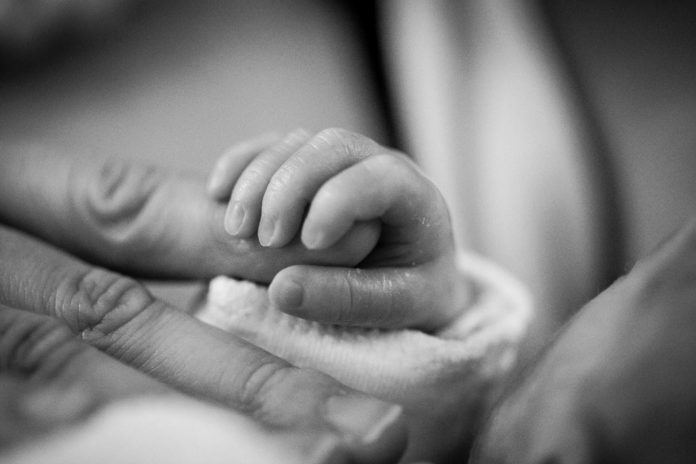There is nothing more agonizing than seeing your child experience pain from a very young age. As parents, you might want to do everything in your power to mitigate this pain. There can be various causes of this pain, and some are not even in your control. One such cause is a birth injury in your child. This is the kind of injury caused to your child before, during, or at the time of labor and delivery. Erb’s palsy is one of many types of birth injuries characterized by muscle weakness in one arm and loss of movement. In infants, it happens due to a physical injury during the delivery or a traumatic stretch between the upper arm and the shoulder, resulting in damage to the brachial plexus. Many infants recover from Erb’s palsy, but some have to live with this condition for the rest of their lives.
1. What Is The Brachial Plexus?
The bundle of nerves that cause Erb’s palsy upon their damage is called the brachial plexus. Therefore, Erb’s palsy is also called brachial plexus palsy. This complex network of nerves has its roots emerging from the spinal cord. It later fuses to the bones of the neck; from there, it goes down to either side towards the arms. Therefore, in Erbs palsy, the child has issues moving the neck, arm, hand, and fingers.
2. What Causes The Injury To The Brachial Plexus?
During childbirth, the injury to the brachial plexus occurs when the head of the baby is already out, but the shoulder remains stuck against the mother’s pelvic bone under the uterus. This situation is called shoulder dystocia. In this situation, the head and shoulder of the baby are positioned at an angle. If the body of the baby is excessively pulled out in an attempt to release the shoulder, it may result in the tear or stretch of the brachial plexus nerves.
In Erb’s palsy, both the lower and upper arm is impacted. The injury happening in the higher up in the brachial plexus affects the movements and sensation in the upper arm and shoulder. On the contrary, injuries occurring in the lower level affect the hand and are often called Klumpke palsy or paralysis.
3. How Do You Know Your Kid Has Erb’s Palsy?
Understanding the symptoms at an earlier stage is important to get the proper medical help for your baby’s treatment. The symptoms of Erb’s palsy include an absence of reflexes on the side of the injury, lack of movements in the entire or part of the arm. You may also need to observe if your baby shows minimal grip strength in one of the arms or has a bent arm at the elbow. Even if you cannot detect these issues in your child until later, your child may show weakness in the arm and partial or total paralysis.
4. Risk Factors Of Erb’s Palsy
Risk factors are those aspects that increase the chances of a disease or a medical condition. In the case of Erb’s palsy, some of the risk factors include.
- Breech Birth
During childbirth, complications can occur, leading to babies born feet-first. The chances of Erb’s palsy increase in this situation as the baby’s arms may be raised, leading to an injury due to excessive pressure.
- Large Infant Size
Large infant and small maternal size also increase Erb’s palsy. This situation can also lead to a complex delivery.
- Improper Delivery Mechanism Or Use Of Birth Tools
Birth tools are often used in a complex delivery. An excessive force applied to the baby with these tools during a complicated delivery increase the probability of Erb’s palsy.
- Pushing Stage Lasting Longer Than Usual
A baby may experience more pressure when the pushing stage lasts longer than usual. The baby may experience stress on its body parts resulting in brachial plexus injuries.
5. Treatments For Erb’s Palsy
Early treatment is the key to recovering your baby from Erb’s palsy. Various surgical and non-surgical treatments are available for Erb’s palsy.
- Non-Surgical Treatment
Non-surgical treatment for Erb’s palsy includes regular home therapies. You can consult your physician or physical therapist for the most effective therapeutic motions applied to enhance the movement, prevent joint stiffening in the hand, wrist, elbow, and shoulder, and improve healing.
- Surgical Treatment
If non-surgical treatment does not bring the desired results within a three to six months period, your child may have more severe forms of Erb’s palsy requiring surgical treatments. Most common surgical treatments include the nerve graft for torn nerves or a complete nerve transfer.
Often birth injuries, heal on their own. However, it may require various forms of surgical or non-surgical treatment in difficult situations. The key to offering the proper treatment is giving it as soon as possible. Delayed treatment can escalate the injury causing a physical disability for the whole life. Therefore, always contact a specialist upon discovering Erb’s palsy in your child.















